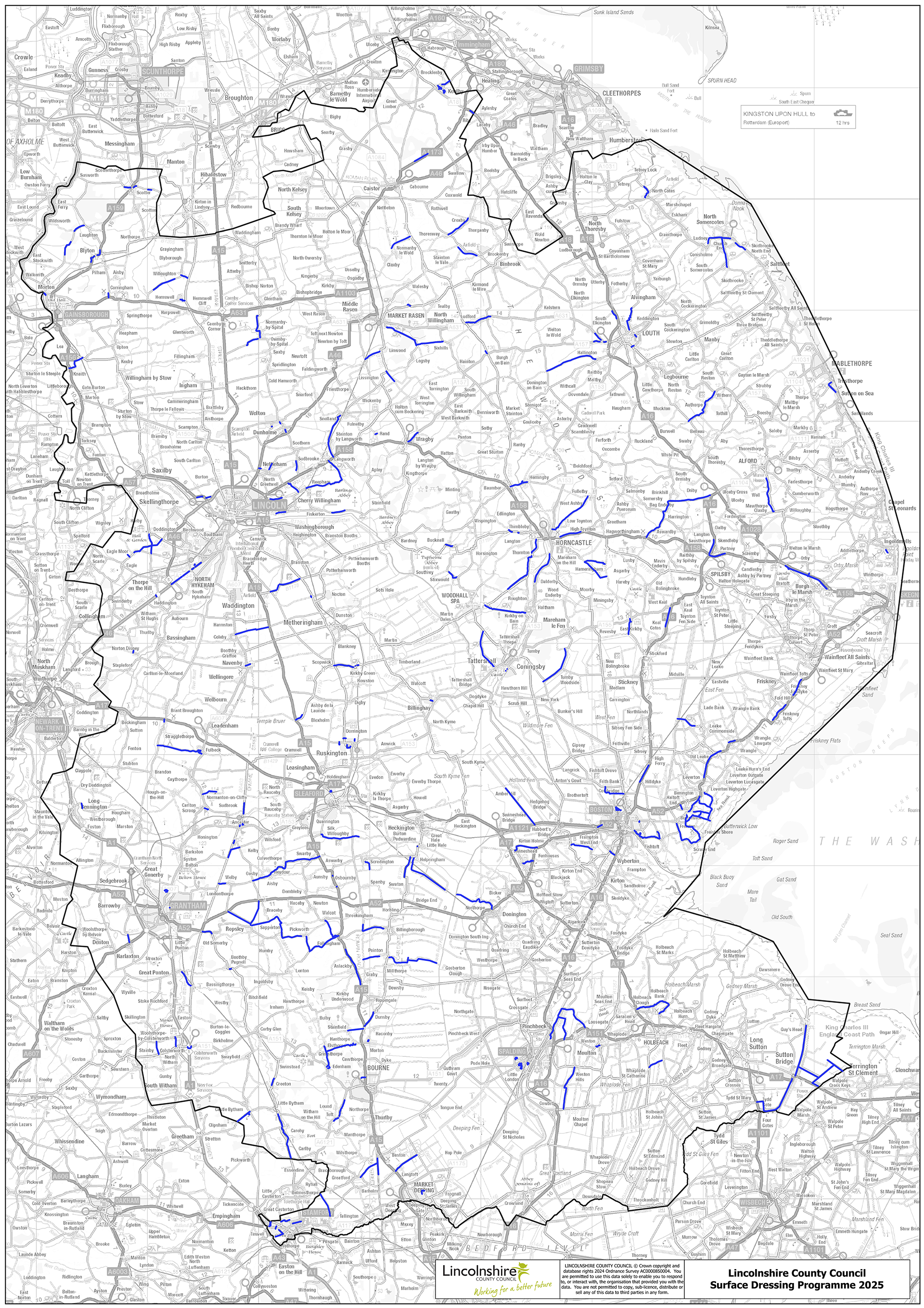
177 miles of Lincolnshire roads are getting a rapid refurbing topcoat to make them better
A huge-scale surface dressing scheme has just kicked-off across the county to make a mass of roads better to use and more resilient against potholes.
Covering a massive 251 sites, the summer resurfacing scheme will swallow up 25,000 tonnes of material and hundreds of work hours to improve 177 miles of roads. That’s as far as going from Lincoln to Cardiff.
The £5.5million scheme has just got underway and is planned to wrap up in the first half of August, weather permitting.
This type of roads dressing scheme is quick, effective - and because 251 Lincolnshire roads are getting it, there’s a high chance it will be happening pretty close to you.
What is ‘surface dressing’?
It’s a cost-effective and pre-emptive way to improve the condition of roads. It’s also quick to do and will put another decade on a road’s life.
You’ve almost definitely seen it used already. Surface dressing is when small stone chips are put down on the road and compress into a sticky bitumen underlayer.
Put simply, what using these stones and tar-like substance does do is make struggling roads better to drive on. It makes the road more level and, once the stones are bedded in, is virtually identical to other road surface types.
And by putting surface dressing down, road condition isn’t just improved, it’s made better for longer. Think of it like putting fence paint on a fence – do it early and the fence lasts longer, it’s the same with this technique and roads.
And there’s recycling of materials involved too. Around 9,000 tonnes of stone chips will be put back into the summer scheme to keep costs down. We get that by sweeping up loose material that comes from last season’s works.
Find out more about surface dressing.
75 tennis courts a day!
Cllr Michael Cheyne, executive member for Highways at LCC said: “This massive surfacing scheme is a very practical way of getting more life out of a road for less cost when compared to having to rip a road apart and then rebuild it, and it costs around a tenth of what the more conventional methods do.
“It’s less disruptive for road users too. We don’t always need a short-term road closure to get the work done and crews can lay around 50,000 square metres of new surface a day which is the roughly the same as 75 tennis courts.”
The work includes:
- Road Studs moved prior to the works
- Ironwork will be masked including gullies, manhole covers etc
- Surface Dressing is laid, including a layer of bitumen followed by one or two layers of aggregate which is then compacted down to be level and pushed into place
- Sweeping the begins between 24-48 hours later with a second sweep 7-10 days after that to remove the loose chips. Later in the year – after 13 weeks - a further sweep will happen, followed by a winter sweep
- Road markings and road studs will be reinstalled within 28 days of completion
Where exactly is it all happening?
New for this year is a live update about where the crews are working in Lincolnshire so you’ll never be in doubt about when the works are happening near you.
Find out where the surface dressing is being put down using our live digital map available at www.lincolnshire.gov.uk/roadworks.

